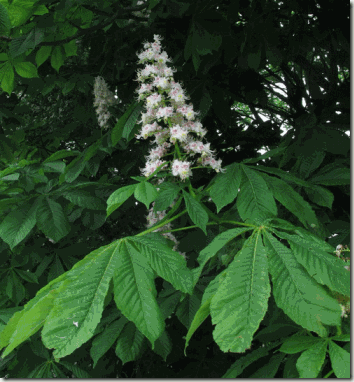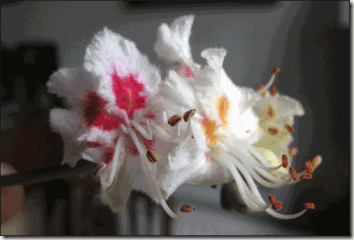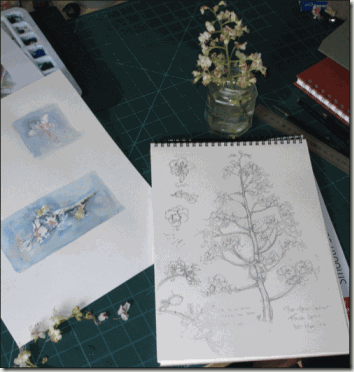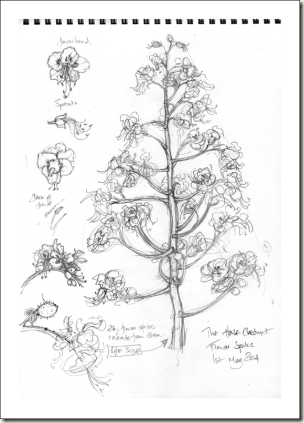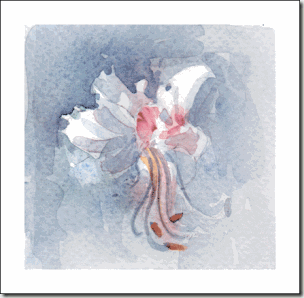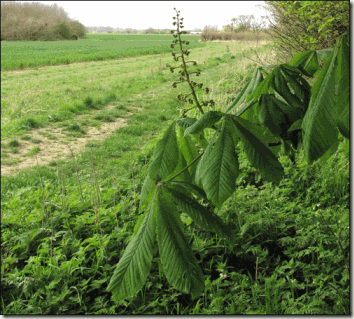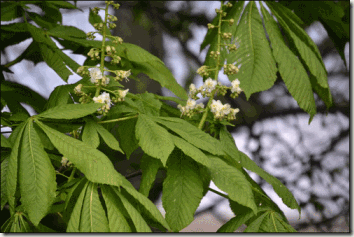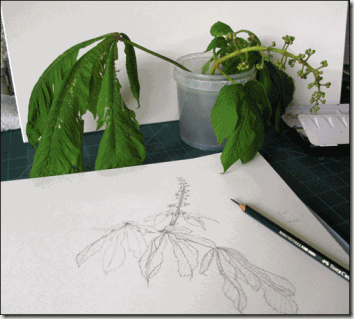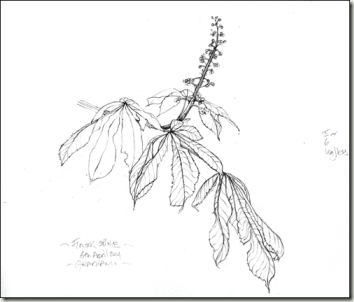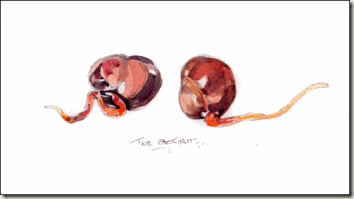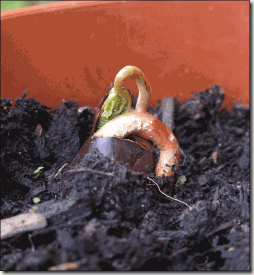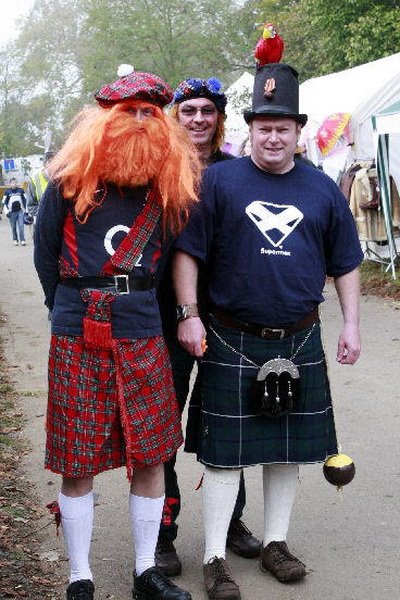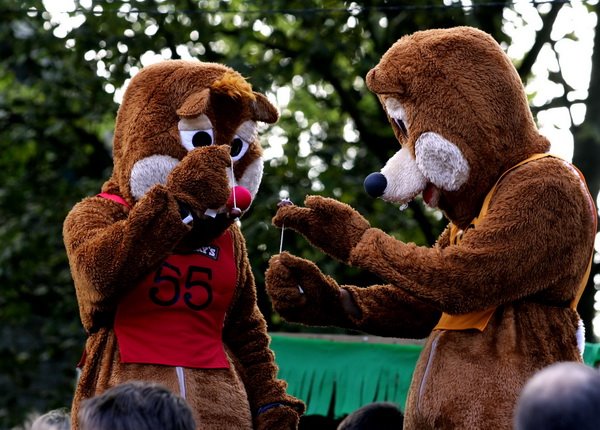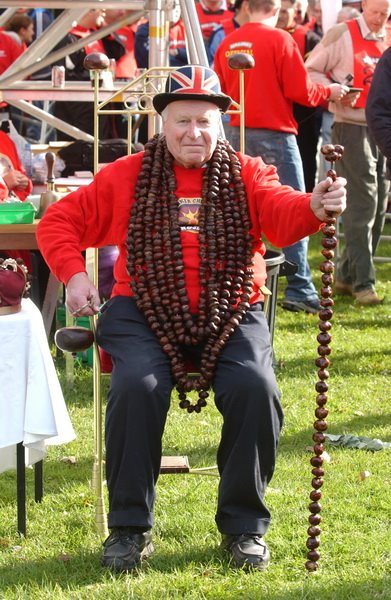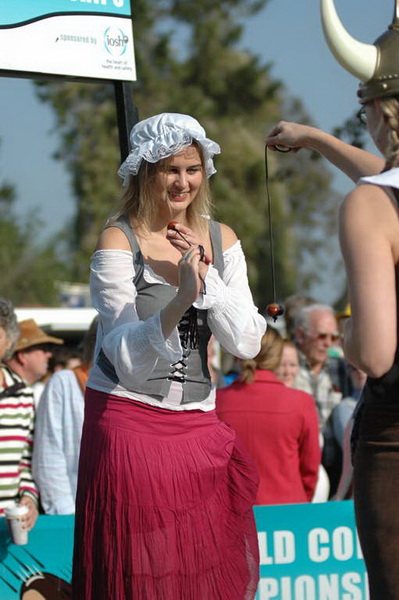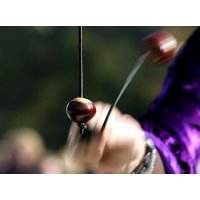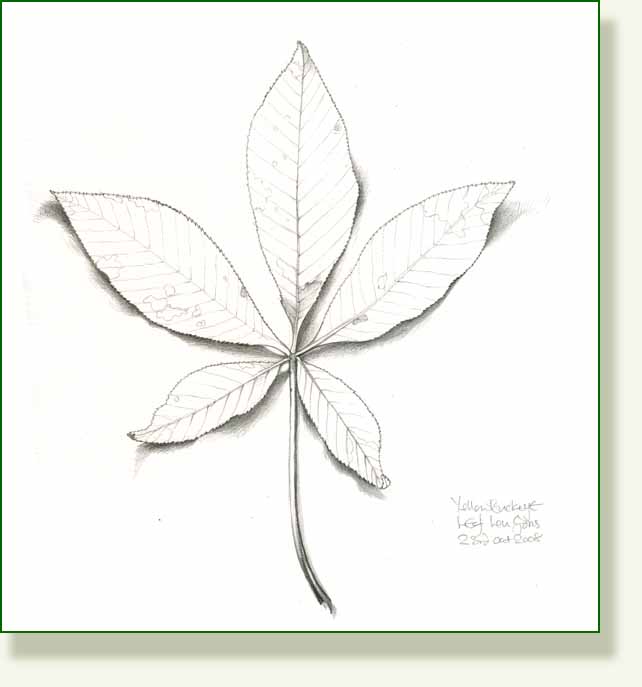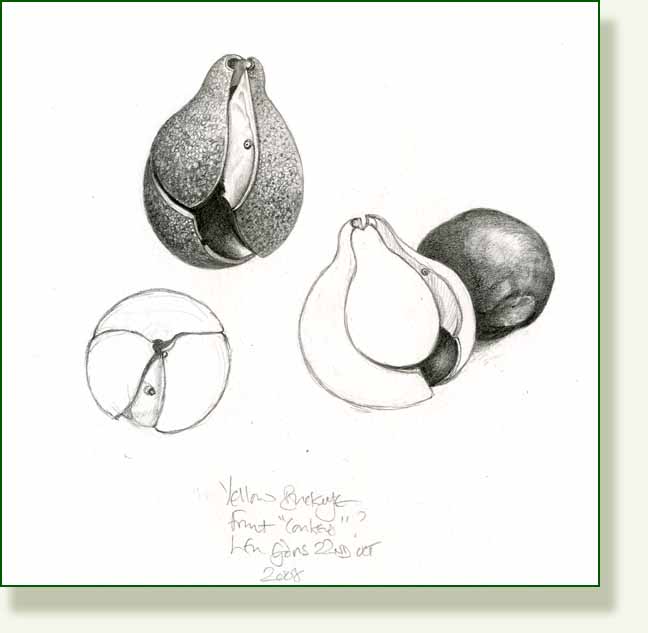The Horse Chestnuts in the village have galloped ahead of me and are in full bloom, their fabulous scented candelabra flowers weighing down the trailing branches. I might get round to drawing a full flower head one day, but they are fiendishly complicated so probably not.
One flower spike seems to have an average of about 25 individual flower stalks radiating out from the main stem. Each flower stalk may have from 2 to 9 or 10 individual flowers. That would give roughly 150 flowers but they are not all in bloom at the same time.
Flower stalks at the base of the flower spike develop first and flowers at the base of those flower stalks are the first to open. They have a yellowy centre initially which then turns crimson. The 5 petals are wavy edged and so very delicate, with long stamens curving down and up from the centre of the flower.
The flower spikes are also very fragile. I have one disintegrating on the desk, the delicate petals fall as soon as you touch them. It is one of those projects where you might draw three individual flower stems a year…then wait for the next season to come around and so on.
It might take many years to complete…….yawn. I do know of some patient and very skilled painters who would happily do that. Not me.
So far I have more or less just looked in hesitant wonder at these complex things. But I have made a page of sketches and a couple of loose watercolours.
A4 sketches … the spike is drawn life size.
The sketches help to work out the construction of its complex shape. One tree in particular is very much more advanced than the others and on the the lowest flower stem a little conker is forming. April seems so early. I brought just that one stem back to draw. This loose treatment seemed a good way of trying to portray the fragility of the flowers.
Flower spike with first small conker, watercolour sketch
And one flower head.
Each flower has 5 frilled petals The pollen on the stamens is ginger Tomorrow I am Easton Walled Gardens with my painting group and I know their Horse Chestnuts will be magnificent!
More conkery things to come.
Over at Beautiful Beasts I am continuing documenting progress of The Black Bee and the Pied Shieldbugs.
It will be finished this week.

